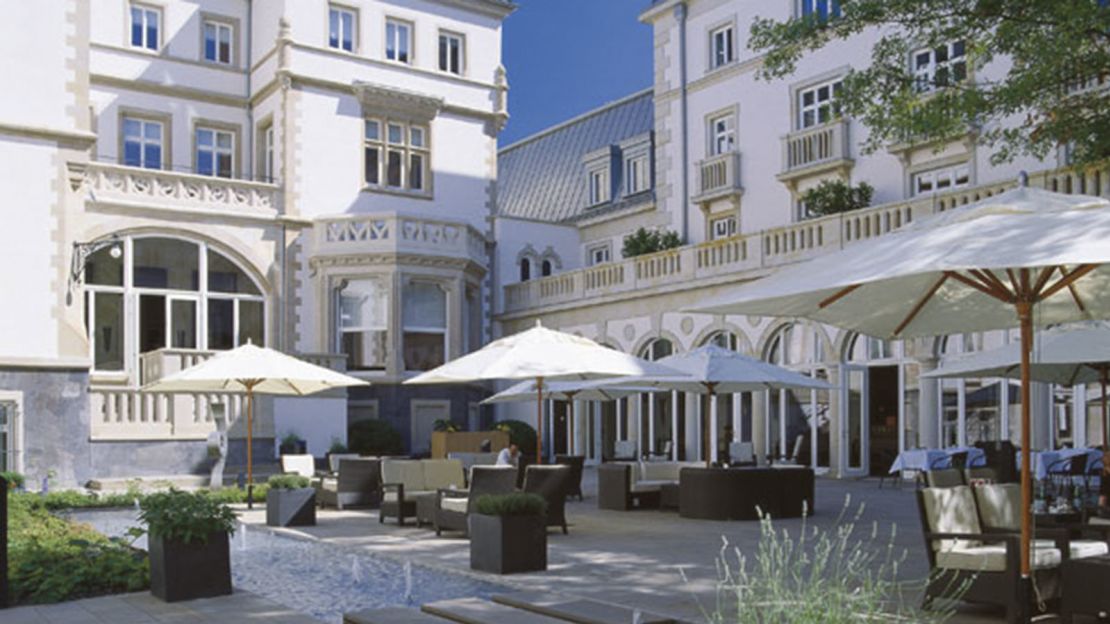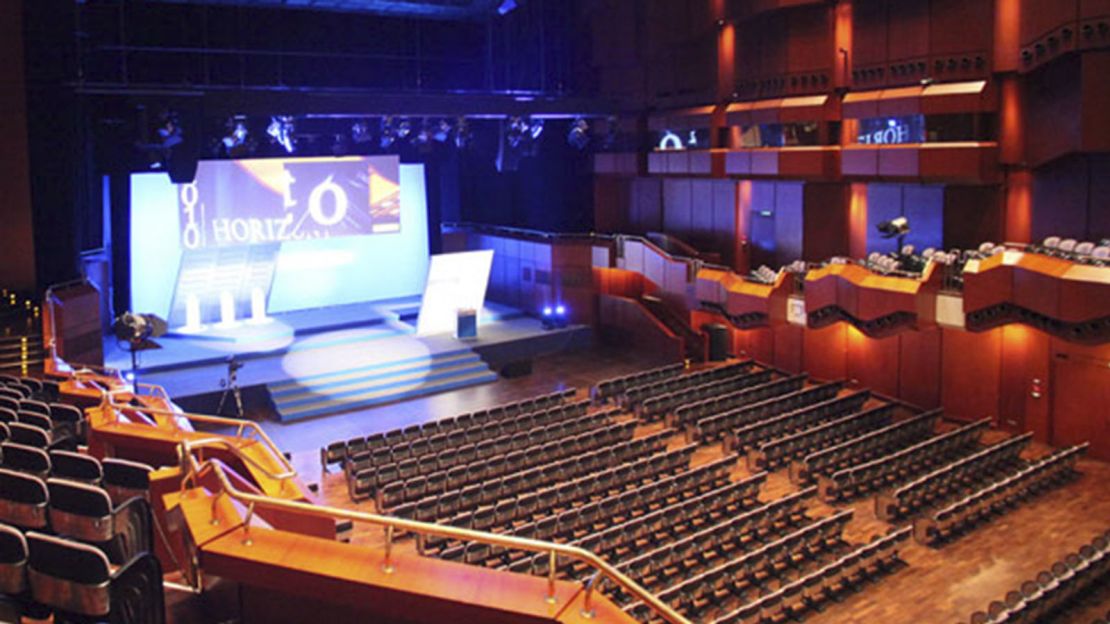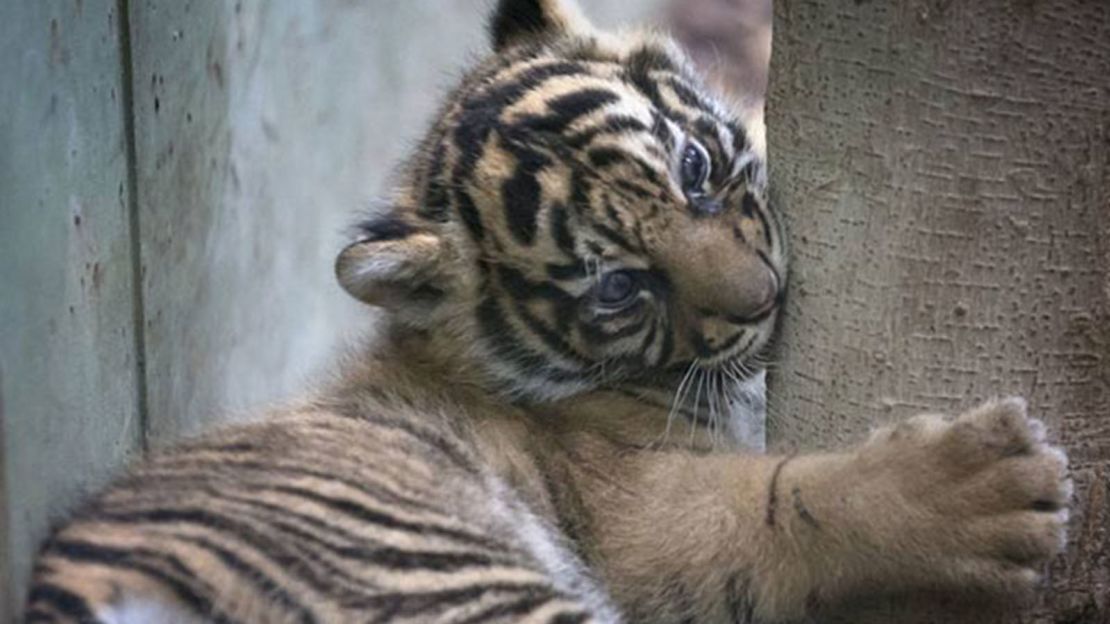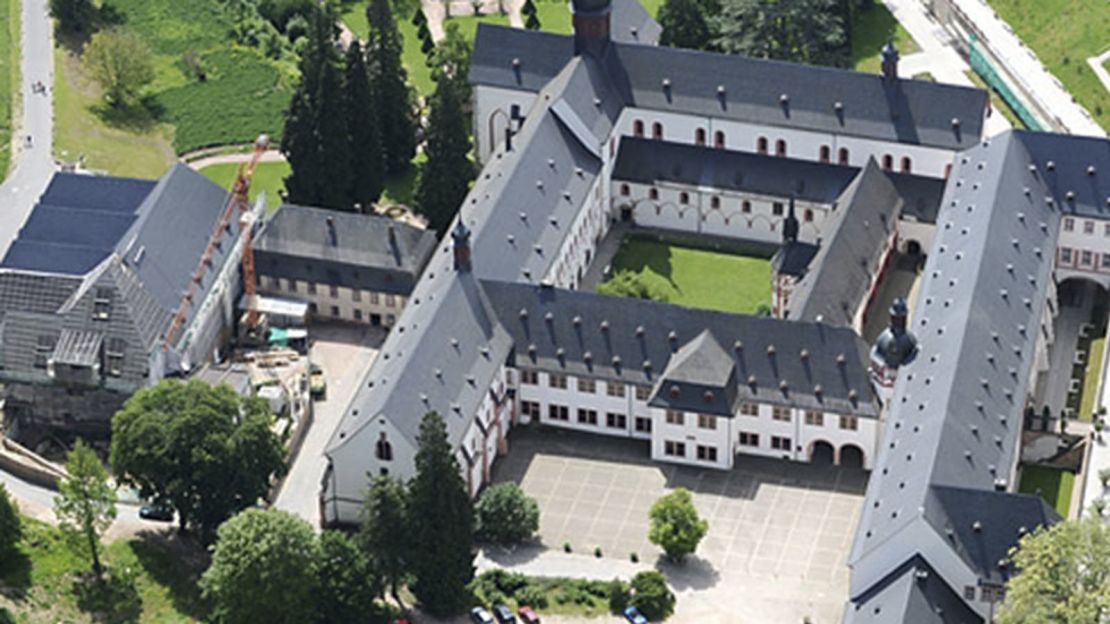Editor’s Note: CNN Insider Guides are thoroughly checked for accuracy. Given the fluid nature of the travel industry, however, some listings may fall out of date before guides can be updated. The best practice is to confirm current information on official websites before making plans to visit any business or attraction.
Frankfurt looks and feels more like a modern American city than any other metropolis when people visit Germany. The towering steel-and-glass skyline spawned the nickname “Mainhattan,” while its more than 300 banks – and the German stock market – prompt others to call it “Bankfurt.”
But scratch beneath the surface and a very German city emerges, one where older traditions like beer gardens, street markets and Teutonic opera mix easily with Michelin-star bistros, fashion boutiques and party boats on the River Main.
Almost completely destroyed during World War II, Frankfurt’s Altstadt (Old Town) is a model of architectural resurrection and adaptive reuse, a maze of cobblestone streets and squares flanked by medieval churches, palaces and townhouses.
Across the river is leafy Sachsenhausen with its apple wine taverns and museum row. On either side of Goethe University, Westend and Bockenheim offer bohemian alternatives to the glitz of nearby downtown.
Though the city’s population falls just short of 700,000, Frankfurt feels like a bigger town where big experiences await. Here’s where to find the biggest and best of them.
More insider tips from: Berlin | Munich
Hotels
Luxury
Jumeirah Frankfurt
With its glass tower and shiny saddleback roof, the 28-story Jumeirah holds its own among the architectural icons of downtown.
But the ultramodern abode stands out in many other ways, from the rooftop beehives that produce the hotel’s own honey to body-heat detectors and motion sensors that regulate temperatures and energy consumption in the guest rooms.
Overlooking the Zeil pedestrian precinct and a seven-minute walk from Goethstrasse, the Jumeirah boasts a best of Frankfurt location for a shopping expedition.
The main train station and old town are also within walking distance.
Villa Kennedy

The neo-Gothic facade of this former family mansion (built in 1904) belies an edgy interior that mixes minimalist furnishings and intriguing modern art. Guests gather in the back courtyard for drinks, chats and sunshine, but that’s not the villa’s only attraction.
In addition to a wide range of health and beauty treatments, the Villa Spa has a 15-meter indoor swimming pool flanked by potted palms. Meanwhile, restaurant Gusto offers fine Italian cuisine and al fresco eating during the warmer months. The resident mixologist at JFK’s Bar dares you to name a cocktail that he can’t create.
Mid-range
Hotel Gerbermühle
Frankfurt’s wildest new hotel overlooks the river and Osthafen docklands on the central city’s eastern edge. Built as a flourmill in 1520, the stout riverside structure is where the writer Goethe met his first love. Now it’s an art hotel with décor that ranges from antique (exposed stone walls) to offbeat (horse lamps).
The 18 rooms and suites are thoroughly modern, with Wi-Fi, widescreen TVs and marble bathrooms. The riverside Summer Garden offers cold beer and traditional German snacks, while the indoor Winter Garden specializes in modern German food including local specialties like Grüne Sosse (hard-boiled eggs and potatoes in a green sauce).
Budget
Art-Hotel Robert Mayer
Located in Frankfurt’s Bockenheim district, the Robert Mayer blends Bohemian vibes and modern technology in a small, comfortable hotel that’s Frankfurt’s best value.
Local artists were commissioned to design each of the 12 guest rooms inside this early 20th-century townhouse. The result is eclectic décor that ranges from cartoon motifs and graffiti’d scribbles to medieval tapestries, postmodern furniture and epic murals.
Dining
Gourmet Restaurant Schwarzenstein
Set amid the rolling vineyards of the Rheingau region on Frankfurt’s outskirts, chef Claudio Urru’s chic wine country eatery blends local and international ingredients into superb contemporary dishes.
Among the house specialties are veal with pumpkin and parsnip, guinea fowl with sweet potatoes, figs and mushrooms, and saddle of venison with walnut cream and cranberries. The New York-style cheesecake is superb, as are the local Riesling and Spätburgunder (pinot noir) wines. Though set on the grounds of Schwarzenstein Castle, the restaurant’s architecture is dramatically modern, the dining room inside a giant glass box overlooking the Rhine.
Zenzakan
This swank Westend eatery personifies the new wave of global cuisine that’s swept Frankfurt in recent years. Both décor and dishes summon the exotic East – Japan, China and Southeast Asia. Giant Buddha heads, towering bamboo shafts and muted lighting give the dining room a temple-like feel.
The food is equally interesting. Among Zenzakan’s signature dishes are lobster soup with red Thai curry and lobster tempura, teriyaki glazed salmon, pepper-crusted miso black cod and “XO” hot chili pepper Georgia wildcat prawns.
Lafleur
It may seem sacrilegious to dine on classic French cuisine in one of the most thoroughly German cities, but Lafleur is the kind of restaurant that begs you to break convention. Unveiled in the fall of 2012, the Michelin-star restaurant is located in a gorgeous Bauhaus building inside the Palmengarten, near the city center.
Austrian-born chef Alfred Friedrich has created a menu that’s among the best of Frankfurt, revolving around creative interpretations of traditional French dishes. The menu ranges from suckling calf with broad beans, chanterelles and fregola sarda to fillet of St. Pierre in filo dough with crayfish and young leeks.
Main Tower Restaurant
On the 53rd floor of the eponymous skyscraper, the Main Tower Restaurant tenders Frankfurt’s best lunch and dinner vistas. The three-, four- and five-course set menus change with the season and might include dishes like suckling pig, smoked halibut or pumpkin risotto. There’s also a vegetarian option.
In the Lounge bar, you can try a selection of local white wines, international red wines and champagne in black-leather armchairs adjacent to floor-to-ceiling windows.
Café Laumer
Renowned for its handmade cakes and pies, Café Laumer has been a Frankfurt favorite since 1919. Housed in a beautiful old building in the Westend university district, the café serves breakfast, lunch and light dinner daily.
The extensive menu includes soups, salads, quiche, croissants and sandwiches as well as local specialties like schnitzel, sausages and Frankfurter tafelspitz (boiled beef in a green sauce). There’s also a range of teas and coffees, as well as wine, beer and spirits from around the continent.
Ebert’s Suppenstube
Located on the pedestrian-friendly Fressgass, Ebert’s is an eating institution among both Germans and expats.
As the name implies, this eclectic deli specializes in soups – vegetable, chicken, pea, potato, lentil, liver dumpling, goulash, chili con carne. But there are all kinds of dishes – spinach fettuccine with veal strips in gorgonzola sauce, meatloaf with “gypsy sauce” and mashed potatoes, German-style pancakes with raisin and almond applesauce, and wild salmon fillet with leeks.
You can eat on the shaded sidewalk tables outside or “take away” food to nearby Bockenheimer Anlage park for a picnic around the water features and outdoor sculptures.
Nightlife
Kane & Abel
The good, the bad and the beautiful people flock to this upscale Frankfurt nightclub, where world-class DJs spin a wide variety of contemporary and classic dancehall tunes.
Premium tequilas, vodkas, whiskeys and tropical cocktails are served at the long tubular bar, and there’s plenty of champagne in the coolers for special occasions. Bottle service is available in the exclusive golden niches at the back of the dance floor.
Kane & Abel, Goethestrasse 31-33; +49 160 9011 8257
Tigerpalast
A throwback to the golden age of German cabaret, the “Tiger Palace” presents a snazzy blend of live music, dance, comedy, mime, magic, acrobats and animal acts in a dinner-theater setting downtown.
Over the years, the show has embraced an increasing number of “nouveau cirque” performances like roller skating acrobatics, strap acts, avant-garde juggling and modern dance, enhanced by cutting edge sound and lighting techniques.
The club stages two shows a night of eight acts each. Guests can opt for a dinner-show package or go solo (cover charge and drinks only).
Frankfurter Jazzkeller
American GIs brought jazz to Frankfurt after World War II and it wasn’t long before the city spawned the best jazz club in Europe. Founded in 1952, the legendary Jazzkeller has hosted Louis Armstrong, Lionel Hampton, Frank Sinatra and Dizzy Gillespie.
The cozy basement club is still going strong after 60 years with live music four nights a week and a “cool music mix” dance party every Friday until well after midnight. In addition to headliners, the club also showcases emerging jazz talents from Europe, Latin America and the United States.
Adolf Wagner
Despite all of the great beer and wine produced in the region, Frankfurt’s favorite libation is apfelwein (apple wine).
Sachsenhausen on the south bank is renowned for its apfelwein taverns, none better than Adolf Wagner, established in 1931 and still owned by the same family. Braeburn single variety apfelwein, created from fruit grown just outside of Frankfurt, is the house specialty.
The tavern also serves traditional German dishes such as pork knuckles, schnitzel, sausages, potato salad and sauerkraut. It’s a sprawling place with several distinct bar areas, and both indoor and outdoor seating during warmer weather.
Shopping
Zeil
The city’s main shopping street for more than a century, the Zeil stretches roughly a mile across central Frankfurt.
The eastern half is motorized, the western half a broad pedestrian street spangled with trees, outdoor cafes, department stores and boutiques. Anchor tenants such as Karstadt and Kaufhof have been there for what seems like forever.
But the ever-evolving thoroughfare has newer shopping places, in particular the flashy MyZeil, an American-style shopping mall with a fitness center, food court, game arcades and child care to complement the diverse shopping.
Kleidoskop
Frankfurt’s version of “thrift” shopping hawks barely-used designer frocks at a literal fraction of what you might pay in the branded boutiques on Goethestrasse.
Armani, Gucci, Hugo Boss, Alexander McQueen – the big names are here. But Kleidoskop also offers plenty of new fashion from the best of Frankfurt’s hip, young designers, plus shoes, handbags, belts and other accessories. It’s located in Nordend near the Eschenheimer Tor subway station.
Kleidoskop, Oeder Weg 56; +49 69 550 837
Eintract
Football fashion and accessories are the forte of this sporting goods store in the old town, not far from the Römerberg square. Jerseys, socks, posters, pennants, badges, bags, mugs, video games – you name it.
The shop takes its name from city’s pro soccer team (Eintract Frankfurt). And while the hometown squad may sell the majority of the merchandise, the shop also carries wares from every other Bundesliga team as well as foreign favorites like Barcelona, Manchester United and Juventas.
Eintract, Bethmannstrasse 19; +49 69 283 010
Bucherer
The Frankfurt branch of this Swiss luxury watch and jewelry emporium overlooks the Rossmarkt (Horse Market) square between downtown and the old town.
Given the wide selection, this two-story marketplace is without a doubt the best in Frankfurt for shopping high-end timepieces, diamonds, gold and other baubles. In addition to its own creations, Bucherer carries treasures by Cartier, Rolex, Audemars Piguet, Chopard, Patek Philippe and other luxury lines.
Bucherer, Kaiserstrasse 1, +49 69 138 821 04
Höchster Porzellan-Manufaktur
Germany’s second oldest porcelain maker has been creating fine plates, cups and animal figurines since 1746, when it received a royal license from the crown prince and archbishop of Mainz.
The company’s “transparent manufactory” in west Frankfurt includes a walkthrough factory tour, during which visitors see the entire creative process from start to finish, as well as a chance to browse the showroom for take-home treasures.
Höchster Porzellan-Manufaktur, Palleskestrasse 32, Höchst; +49 69 300 902 40
Attractions
Römerberg
This cobblestone square in the old town has been a hub of Frankfurt life since the 9th century. It’s served as a venue for many of the city’s most important events, from imperial elections and medieval jousting to public executions and Christmas fairs.
Here are found historic buildings including the Old Nikolai Church, St. Paul’s Church and the structure from which the square takes its name – the exquisite Römer, home of Frankfurt’s city government for more than 600 years. The Imperial Hall displays the portraits of the 52 Holy Roman emperors.
Due south of the square is the Frankfurt History Museum, highlighted by the permanent collection, “Collectors and Donors of Frankfurt,” which features the private art and artifact collections of a dozen well-known Frankfurters.
Alte Oper

Frankfurt’s old opera isn’t nearly as ancient as it looks. The handsome neoclassical structure was almost completely destroyed during World War II and not rebuilt until the 1980s after a public outcry saved it from demolition. The building now hosts around 300 events per year ranging from opera, ballet and symphony to modern dance, Broadway musicals and even the occasional rock concert.
The 2,450-seat Great Hall is the main venue, while smaller events unfold in the 720-seat Mozart Hall. Both are renowned for their plush decoration and superb acoustics.
Frankfurt Zoological Gardens

One of Europe’s oldest zoos (1858) is also one of its largest and most prestigious, with more than 4,500 animals housed in an ever-increasing number of modern habitats. Under the leadership of longtime director Bernhard Grzimek, the zoo also became a leading force in global conservation, including the preservation of the Serengeti plains in East Africa.
Among its anchor exhibits is the Exotarium, housing an eclectic array of fish, birds and reptiles from the around the world. Chimps, gorillas and orangutans dwell in the Borgori Forest, a 10,000-square-meter indoor habitat flush with waterfalls and rainforest plants.
Goethe House & Museum
Johann Wolfgang Goethe, Germany’s most celebrated author, was born in this four-story townhouse in Frankfurt’s old town in 1749. A multitalented bard, Goethe wrote poetry and prose, scientific papers and memoirs, and more than 10,000 letters.
Mozart and Beethoven were among the many composers who set his words to music.
Filled with period art and antiques, the house has exhibits on Goethe’s life in Frankfurt as well as his early works and inspirations. The adjoining museum, housed in a modern glass-fronted building, contains art by German painters of the Romantic period.
Museum Embankment
Arrayed along the River Main’s southern bank is a row of nine museums, each specializing in subject matter ranging from art and architecture to movies and natural history. Foremost among them are two important art collections.
Housed in an imposing neo-gothic villa, the Liebieghaus showcases sculpture from ancient Egypt through the 18th century, as well as works from Europe, Africa and Asia.
The massive collection of the Städel Museum includes works by European masters of the 14th through early 20th centuries including Rembrandt, Bosch, Vermeer, Botticelli and Degas.
Along the Main
With a renowned airport and busy train station, it’s easy to forget that Frankfurt is also a river city, but its full name is Frankfurt am Main.
It’s only in recent times, however, that the River Main has come into its own as a recreational outlet and tourist attraction.
River Cruises
Primus Line runs a variety of trips along the Main in modern triple-decker river boats including short sightseeing cruises, dinner cruises and after-dark skyline tours.
Its full day trips include an upstream cruise to Seligenstadt monastery and Aschaffenburg Castle, as well as a downstream trip to the confluence of the Main and Rhine and the romantic castle towns along the Middle Rhine Valley.
All trips depart from the north bank (Mainkai), just upstream from the Eiserner Steg bridge. Commentary comes in English and German.
Frankfurter Flohmarkt
Frankfurt’s popular Saturday flea market now rotates between two waterfront locations – the Schaumainkai promenade on the river’s south side and a new site on Lindleystrasse around the Osthafen docklands.
Hundreds of stalls hawk a heady blend of new arts and crafts, vintage clothing, antiques and genuine junk, as well as food and drink. Merchandise often changes by the season, with yuletide decorations, gifts and foods all the rage in the run-up to Christmas. The market runs 9 a.m. to 2 p.m.
Beaches
Like other river cities in central Europe, one of the hottest summer trends in Frankfurt is pop-up beaches at spots along the Main.
In addition to sandy strands and swimming spots, these mock tropical hangouts feature beach chairs and colorful umbrellas, sand volleyball courts, tents serving food and drinks, boules and other games, and either live bands or DJs spinning the latest summer sounds from around the world.
The King Kamehameha Beach Club at the western (downstream) tip of Hafeninsel Island is probably the best known, but the number is growing with each new summer. Other Frankfurt strands include Orange Beach in Griesheim and Niddastrand Beach Club on the Nidda River.
Westhafen
Frankfurt’s latest river renewal project is Westhafen, a mixed-use residential, retail and marina complex on the northern bank of the Main.
Scattered along the waterfront are a number of eateries and drinking spots with spectacular waterfront settings: Café & Bar Marina Westhafen, with its outdoor tables and wooden deck; the Druckwasserwerk restaurant, inside an old Romanesque Revival-style powerhouse; and the ultra-mod Frankfurter Botschaft, with its huge picture windows overlooking the harbor and sandy garden.
Rheingau

The Rheingau wine country sprawls along the Main and Rhine to the west of Frankfurt, producing what many oenophiles consider the world’s best Riesling.
While white grapes are the area’s bread and butter, the Rheingau also produces excellent Spätburgunder (pinot noir).
Legend holds that Charlemagne mandated the planting of the first vines more than a thousand years ago, but it was Queen Victoria who brought the region’s wines to world attention when she became enamored with the Riesling produced by the vineyards around Hochheim village.
A sampling of the region’s renowned wineries:



